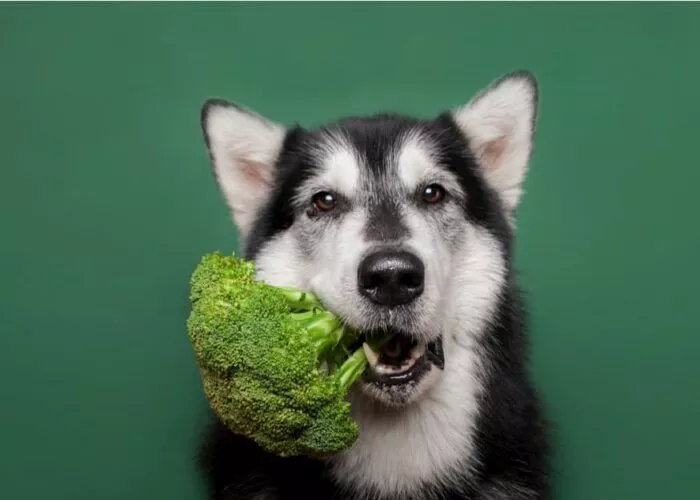The pandemic triggered a rise in anxiety and fear among dogs, as their lives became increasingly disrupted. From the stress of lockdowns to the uncertainty of their owners’ routines, many dogs have struggled with heightened anxiety. But with the right approach—patience, positive reinforcement, and tasty treats—there is hope. John-Paul Flintoff explores how to support his own anxious dog, Peanut, and shares expert advice from animal behavioral scientist Dr. Zazie Todd.
A Growing Problem: The Rise of Dog Anxiety
Dogs, unlike children, can’t be reasoned with when they’re scared. As anyone who has cared for an anxious dog will know, it’s not just the dog who suffers—owners feel the stress too. This year, my own miniature schnauzer, Peanut, developed a fear that has been challenging to manage. While her case might not be as severe as others, it’s enough for me to seek expert advice.
Dr. Zazie Todd, a renowned animal behavioral scientist, has written a comprehensive guide on how to help anxious dogs, Bark! The Science of Helping Your Anxious, Fearful, or Reactive Dog. Todd, who lives in Vancouver, has helped countless dog owners navigate similar challenges through her blog, podcast, and one-on-one sessions.
The pandemic, she argues, has led to an “epidemic of fear” in dogs. Stress in pregnant dogs, combined with poor breeding practices, meant that many puppies were born into stressful environments, potentially leading to heightened anxiety later in life. Additionally, with the pandemic restricting socialization, many dogs, particularly puppies, missed out on critical early experiences that would have helped them handle normal sights, sounds, and situations.
The Real Impact: From Pandemic Puppies to Abandoned Dogs
The consequences of these trends are still being felt today. In the UK, around 40,000 dogs are abandoned or handed over to local authorities each year, many due to behavioral problems, such as anxiety. These issues can manifest in various forms—fear of other dogs, separation anxiety, or reactions to common stimuli like the sound of fireworks.
The emotional toll on owners can be immense. Todd notes that the day-to-day challenges of caring for a fearful dog often require significant changes to one’s lifestyle, patience, and sometimes, even their physical environment.
Peanut’s Fear Journey
Peanut’s anxiety didn’t appear overnight. Until recently, she was an adventurous dog—attending bookshops with me and lying at my feet while I browsed, seemingly unfazed by the hustle and bustle around her. But after an unsettling experience in a local bookshop, where two men laughing loudly triggered her fear, Peanut began to associate the store with anxiety. The change was gradual, but unmistakable.
Soon, Peanut was avoiding the restaurant where a loud clapping sound from another table made her panic. By November, with the onset of fireworks season, Peanut’s fear escalated—what had once been a dog unbothered by loud noises now tucks her tail at the sound of a single firework.
Understanding Fear and Anxiety in Dogs
Dr. Todd distinguishes between fear (a specific response to a known trigger) and anxiety (a more generalized sense of unease). Peanut’s sudden turn to fear is an example of how dogs can develop irrational anxieties. Dogs are exceptional at forming associations—good or bad—and it’s this tendency that can sometimes create long-lasting fears. Fear, as Todd explains, is easy to acquire but hard to undo.
Old-fashioned training techniques, like punishment or shouting, only make matters worse. These methods inadvertently reinforce the dog’s fear, teaching them that the scary stimulus is followed by something even more unpleasant.
Positive Training: Counter-Conditioning
Instead of harsh tactics, Todd advocates for counter-conditioning, a positive reinforcement method that pairs frightening experiences with something pleasant. By offering high-value treats when a scary situation arises, you can help your dog form new associations with their fears. The goal is to teach your dog that something good—like their favorite treat—happens when they encounter something that previously scared them.
For example, Todd successfully used this method to help her own dog, Pepper, overcome his fear of the coffee grinder. By consistently rewarding him with treats whenever the grinder noise occurred, Pepper learned to associate the sound with something pleasant, no longer reacting with fear.
For Peanut, I tried a similar approach. I began carrying around special treats—cooked chicken, cheese, and other high-value snacks—and offered them whenever she seemed anxious, like when passing the bookshop or encountering loud noises. While the progress has been slow, I’ve noticed small improvements. Over time, these positive experiences may help Peanut overcome her fears.
The Patience Game: Small Steps Toward Healing
Patience is key. Todd emphasizes that progress with anxious dogs can take time—sometimes much longer than owners hope. The training involves breaking down the fear into smaller, manageable steps and desensitizing the dog gradually. This may mean exposing Peanut to the trigger from a distance and rewarding calm behavior before we move any closer.
A Community of Support
Peanut’s case is far from unique. Other owners, like Katya Robin and broadcaster Rory Cellan-Jones, have experienced similar struggles with rescue dogs. Their stories show that with time, consistency, and plenty of love, even the most fearful dogs can learn to trust again. For Mika, a Romanian rescue dog, it took many months of training, but eventually, she became a loving and secure companion.
Conclusion: A Long Road Ahead
Helping an anxious dog is not an easy task, but it’s one filled with hope. As Dr. Todd reassures, “Time is on your side.” With a positive, patient approach and plenty of delicious rewards, Peanut—and dogs like her—can learn to overcome their fears. The journey may be long, but the sense of accomplishment and the joy of seeing your dog recover is worth every step. For now, I’ll keep carrying those treats in my fanny pack, ready to help Peanut face her fears—one snack at a time.
Related topics:
Nepal Celebrates Kukur Puja: Honoring Dogs During Hindu Festival Tihar
Essential Tips to Keep Dogs Calm During New Year Celebrations
Australian Woman Devotes 17 Years to Rescuing Dogs in Vietnam


